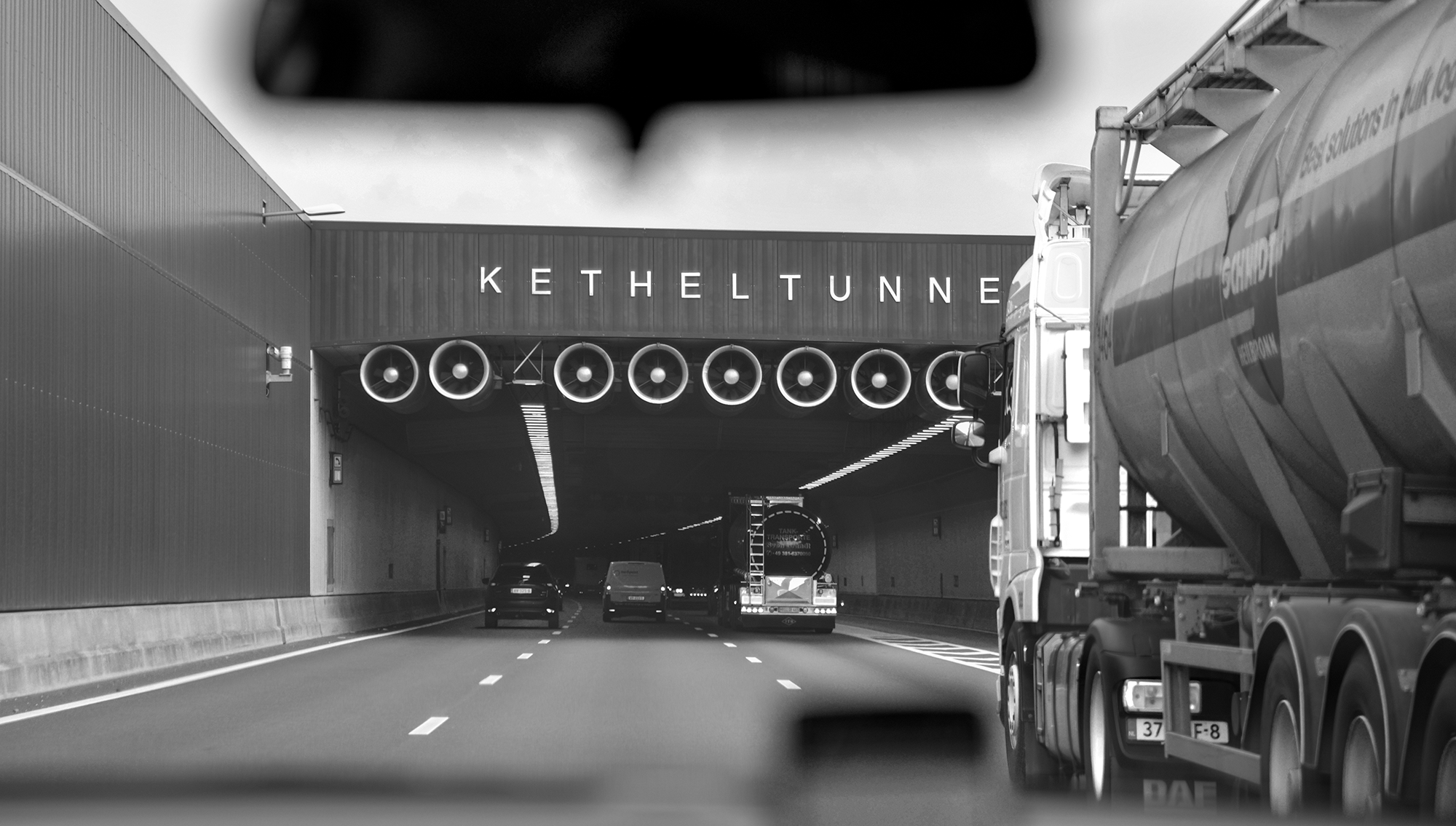To better predict traffic jams and manage traffic flow proactively, the NDW Data Science Society initiated a project using artificial intelligence (AI) for the Ketheltunnel area near Rotterdam, the Netherlands. Commissioned by NDW and Rijkswaterstaat, and developed by a consortium including AiMTT partners d-fine, Arane, and TU Delft, the project focused on implementing a predictive traffic management model.
At the core of this approach is TU Delft’s 2021 Multistep Traffic Forecasting Model. This model integrates historical and real-time data to forecast traffic conditions up to 60 minutes ahead. It features a Dynamic Graph Convolution module that learns spatial relationships between road segments, taking into account the speed at which traffic-related disturbances (shockwaves) propagate. This allows for more accurate predictions of congestion build-up and spread.
Another key component is the model’s encoder/decoder architecture, which processes traffic time series. The encoder compresses historical data into a spatial-temporal representation, continuously updated every one or two minutes. The decoder then generates predictions from these representations. The model uses a recursive prediction approach, where each time step prediction feeds into the next, enhancing accuracy.
Training
The model was trained using loop detector data from January to August 2024 for the A4 and A13 highways, especially the stretch between Ypenburg and Benelux interchanges. The Ketheltunnel area presents particular challenges due to its congestion relocation system, which shuts the tunnel when congestion builds up, causing upstream traffic waves. The A13 then becomes a crucial alternative route.
Data preprocessing included filling gaps via linear interpolation, avoiding adaptive smoothing to retain sharp changes, and converting the data into fixed-length time series. Time steps were set to one minute (instead of two), improving the model’s responsiveness, especially after adjusting the assumed shockwave speed.
Accurate Forecasts
The model performs well in regular conditions. It accurately forecasts congestion development and tunnel closures, as shown by a case study comparing predicted and actual traffic during a typical afternoon rush hour. However, it struggles with unusual situations, such as roadworks or incidents, due to lack of training data representing such scenarios.
Potential Applications
Four potential applications were explored:
- Tunnel operator alerts about expected congestion, though less useful as operators primarily focus on incidents.
- Inflow control, where predictions help time interventions to prevent congestion from entering the tunnel.
- Managing A20 traffic toward the Benelux tunnel to prevent backup into the Ketheltunnel.
- Route advice between The Hague and Rotterdam, helping choose between A4 and A13 based on forecasted conditions.
A special evaluation was conducted for the Route advice use case using a confusion matrix and historical data. The model showed 95% accuracy and 98.5% precision in suggesting route changes. Applying a linear correction further improved reliability, especially during peak times.
Challenges remain, particularly in handling non-standard traffic patterns. Future improvements could include adding data on roadworks and weather, incorporating lane-level predictions, and using Physics-Informed Neural Networks to better model traffic dynamics. Overall, the model provides a solid foundation for proactive, data-driven traffic management and can be applied in other regions to enhance traffic flow and reliability.
___
This news item is based on an article published in NM Magazine 2025 #1 (Dutch).

